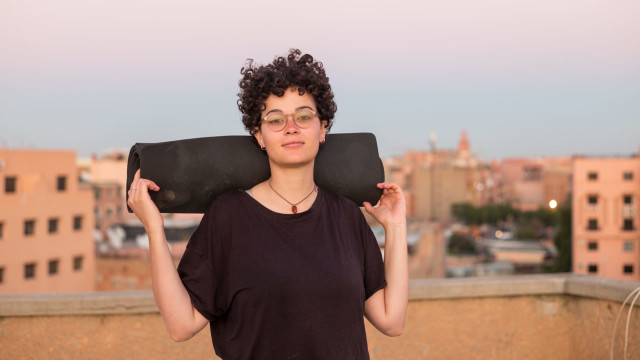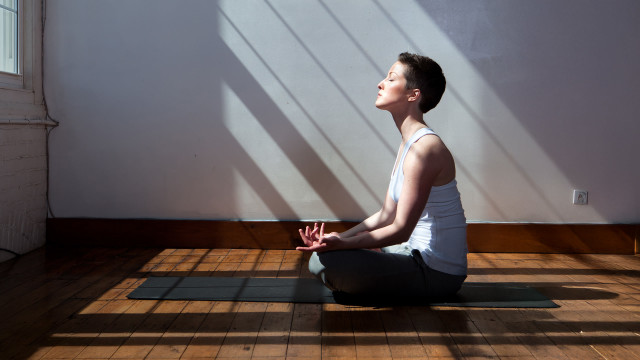Meditation Made Me A Better Friend

Joslyn Hitter's first foray into meditation wasn't an immediate hit. Still, she felt compelled to try again — and more than a decade later, she's a dedicated practitioner who teaches others to integrate meditation into their daily lives. Here, she talks about her first silent retreat, how meditation has affected her friendships, and why she never rushes into stillness.
Q: How did you become introduced to meditation?
A: I was a very enthusiastic yoga practitioner of a traditional form called Ashtanga yoga. I started that in 2000 when I was still in college, and I was very dedicated to the practice — six days a week, early mornings, the whole thing.
In 2008, one of my teachers, Maty, told me it would be a good idea to go on a silent meditation retreat at Spirit Rock before turning 30. I signed up about a year later and, at that time, had fallen off my yoga practice because my teachers had sold the space they taught in and moved to Hawaii.
I was feeling a little lost, so I was like, "Oh, this would be a good time to start to do that thing Maty told me to do." I went to Spirit Rock and sat at a five-night silent meditation retreat; I was miserable. I remember driving home from that retreat — I left early, first thing in the morning on the last day — and thinking, "I need to do that again." I remember noticing how that was a strange thought considering the miserable experience.
I signed up for another retreat six months later, and I had an enjoyable experience. I sat two to three times a year for the next couple of years. And then, in 2012, I posed a metta retreat, a loving-kindness retreat, and had a heart-opening experience. That was when I started a daily committed practice.
Q: What are the most significant benefits you've received from meditation?
A: I used to fight with myself a lot. Internally, I felt like the different parts of me were not on the same page. There was just a lot of contention. The main benefit was that I learned how to have inner peace — it's not like my mind and my body and heart are all in constant agreement, but we all get along.
Everything's fine now; we know how to coexist in a way that's like a good roommate situation; we can all live in this house together and be respectful and get along.
And somehow, that type of energy toward myself enabled me to be a much better friend to people. I have more friends than I did 10 years ago, and the quality of my friendships are much better. By learning how to be a friend to myself, I learned how to be a friend to other people.
That seems to be a fruit of my practice — not only do I like to be around me, but other people like to be around me now.
Q: Who's had a significant impact on your work?
A: Many people: Arinna Weisman, Spring Washam, Trudy Goodman, Donald Rothberg, Sylvia Boorstein, Tempel Smith, Greg Scharf.
Q: What does your daily practice look like?
A: It's not the same every day. I sit for a minimum of 30 to 45 minutes in the mornings and engage in a silent practice, mainly mindfulness of breathing and occasionally a little bit of open awareness. I do some movement practice each day, either Pilates or qigong. I'll also engage in a pranayama type of practice, maybe two or three times a week.
Most days, I spend about two hours practicing, and the first big chunk of it will be just silent. Then a second chunk will be some movement and some breathwork. I'd say I get two hours a day in five days a week, but there are a couple of days where it's the 30- to 45-minute sit, and then that's it because life is happening.
Q: What would you tell a beginning meditator who doesn't yet have that kind of routine?
A: Any practice is good practice. I don't rush into stillness. So the first 15 minutes of my sit, I'm drinking my tea no matter what. I'm warming up; my eyes are open. I'm in my cozy spot, sitting in my posture. My phone is off, I have all my blankets, my dog, and I'm just looking out my window.
Try this class, Loving Kindness on the Go, by meditation teacher Curtis Smith to practice sending love and cultivate meaningful relationships.
Header photo: Klaus Vedfelt/Getty Images







